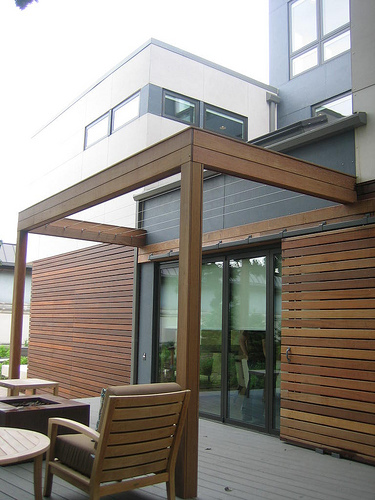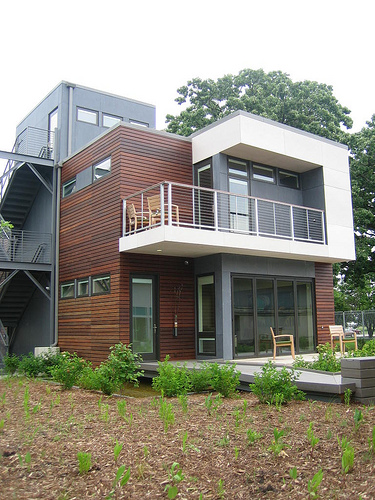Remember when modular homes were going to be part of the “green” future? In the post-Dwell, post-postmodern architecture era, pre-fab was going to be cheap, green, hot and hip. Yes, finally, an antidote to McMansions and an affordable alternative to ballooning home prices. As if that were not enough, these stylish boxes were set to erase our previous connotations, where modular meant mobile home and pre-fab equaled Lubbock double-wide.
 Photo: Heather Lucille FlickrExcept it didn’t happen. Modular homes, like all homes, suffered the housing crash, though as we reported last year, there never was quite enough demand to make modular modern homes tumble off the production line; they’re only affordable if they’re mass-produced.
Photo: Heather Lucille FlickrExcept it didn’t happen. Modular homes, like all homes, suffered the housing crash, though as we reported last year, there never was quite enough demand to make modular modern homes tumble off the production line; they’re only affordable if they’re mass-produced.
But apparently a new demand has sprung up for modular homes, only it’s not among the green set, or the young, or first-time homebuyers. And it’s not for the modestly sized versions of pre-fab. Rather, according to the Washington Post, mansions are increasingly going modular.
In less than a day-and-a-half, a six-bedroom, six-plus bath, 7,200-square-foot home can appear on a slab of land in any number of charming styles: Prairie, Arts and Crafts, French Country. The one profiled in the Post ran the owners a cool $2.5 million, though an estimated 15 percent less than traditional stick-built homes of that size and level of luxury (replete with elevator shaft). Nice for them. And because these Lego-Mansions are raised so quickly, the construction loans are shorter, and therefore cheaper.
It’s true that even pre-fab XXL can contain green features, like geothermal heat pumps and pre-cut walls that defend against mold and mildew.
Yet their very size precludes these homes from being truly green; it’s just plain environmentally unfriendly to build a home with 10 times as much living space as actually needed. That sentiment recently bubbled to a boil in Berkeley, where a software mogul is building a 10,000-square-foot mansion that is classified as green by the city’s standards; they measure things like water use and building materials for the designation, not size.
The trend of modular mansions isn’t completely new; there’s a 2005 book on the subject that showcases 12,000-square-foot monstrosities. Presciently, perhaps, even that book predicted these would be “the homes of the future.” While they account for only 3% of newly built homes, their popularity seems to be on the rise. They are a recession-friendly luxury.
Don’t blink, the new “green” house next door could go up overnight, and it could be ginormous.



